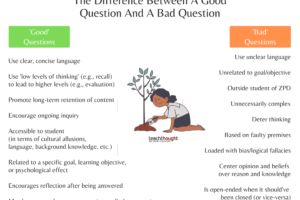
Does Advanced Tech Mean That Secondary ELL Classes Should Be Radically Restructured?

geralt / Pixabay
I had a bit of a revelation last week while working with a group of the more English proficient students in my ELL Newcomer class. They were writing a story, which is how I always end the school year.
I pushed hard asking students to just use Google Translate for “words, not sentences,” but, as usual, it was a losing battle (though I do think more students implemented a new guideline I suggested – “Think about the sentence in English before you use Google Translate to check it”).
I also did ask them to specifically use Google Translate in another way – after they felt they were finished writing their story, I asked them to paste it in Google Translate and read the Spanish version to see if it made sense. Google Translate’s capability with Spanish has supposedly surpassed a 95% accuracy rate recently, so I thought that might be useful (and students agreed).
In reading students’ stories, it was clear they used Google Translate almost as much as my past students have used it – in other words, a lot. But it was also clear that Google’s recent advances showed that several of my students were very talented writers in their primary language. I don’t think that was as apparent to me in the past with earlier versions of Google Translate.
So, that experience and subsequent conversations with more advanced ELLs in my other classes got me wondering about how we structure ELL classes in the age of easily accessible technology. In other words, though it seems to me helping students get basic grasps of English reading and writing in Newcomer and, perhaps, Intermediate classes makes sense, would it be better to place a much greater emphasis on speaking and listening in more advanced high school ELL courses (at least, where most ELL students are Spanish-speaking and, and in the future, maybe others when Google Translate’s performance in their languages improves)?
Based on my conversations with students in those classes, that would clearly be their preference.
I mean, it’s not like they’re going to be in many situations where they wouldn’t be able to use Google Translate for writing and Google Lens for reading – if they needed it.
But speaking and listening are the two areas where tech is going to take a long time to get to a truly practical Star Trek-type Universal Translator usable by everyone (despite recent impressive simultaneous translation advances).
I’m not suggesting throwing out reading and writing in those classes. But I do think in many existing high school classes that speaking and listening are very much secondary to them. Should those priorities be reversed?
I think a weaker case can be made for that kind of reversal in earlier grades. But, at least in our school, most of our ELL classes are comprised of students who have recently arrived in the U.S., and they just don’t have a whole lot of time left to spend in public schools.
Of course, another kind of technology – Artificial Intelligence – might be the big counter argument to this kind of change. If more and more college instructors move to requiring in-class writing to combat AI use, and restrict Google Translate as part of those rules, then we would be shortchanging our students by making reading and writing a lesser priority.
Sigh.
There are always trade-offs and never any easy answers in education….
What do you think? I’ve had to restrict comments on this blog because of AI bots, but I’d love to hear from people via email, or on Facebook, BlueSky or Twitter.
Source link



